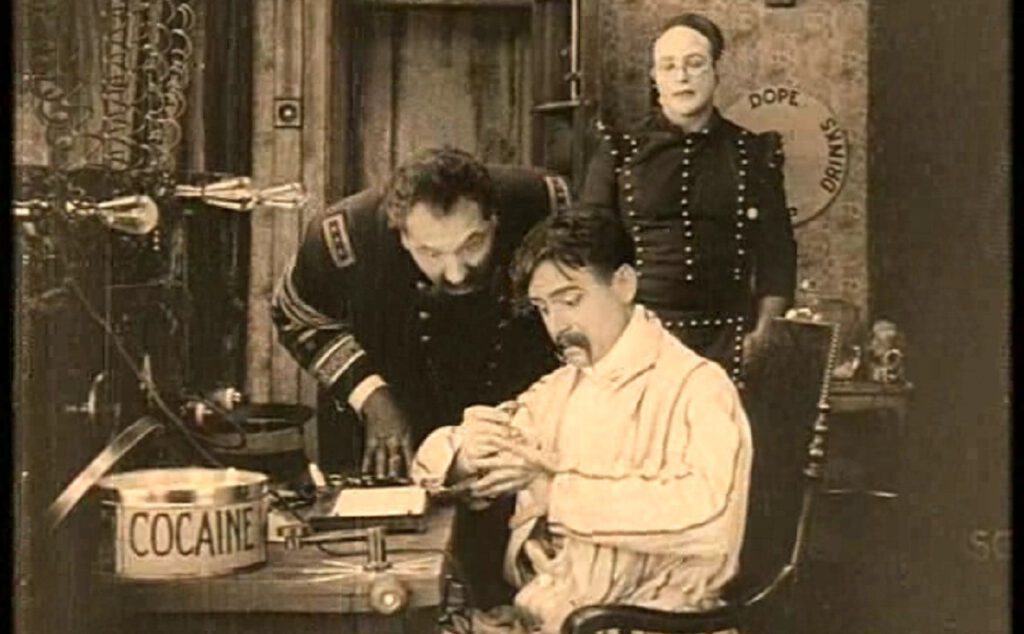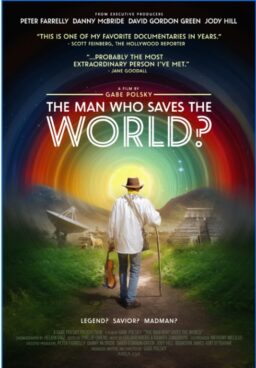The peculiar, intoxicating qualities of the coca leaf were
first discovered by Europeans around 1569 when the Spaniards landed in South
America. The cocaine alkaloid was
first isolated around 1855. Shortly thereafter,
it began being utilized within the medical community in various ways—as an
anesthesia, as a pain suppressant, and as a weight loss assistant. Freud was an
early fan of the drug; he sang its praises in an article he published in
1884.
Soon after,
cocaine began to be sold commercially. Quite famously it was in Coca-Cola in
1886. Around this same time, it was also being marketed as everything from a
toothache remedy (for children!) to a hair care product. Recreational use of
the drug took off from there. By the late 1880’s and early 1890’s, cocaine was
being sold over the counter as either a pleasurable additive to cigarettes or
in a more pure and immediate powdered form.
America’s “snowstorm”
didn’t last long. Though cocaine would not be made illegal for non-medical
purposes (on a federal level) until 1922, by that time, it was already falling
out of favor. Coca-Cola removed it from their recipe in 1906. Articles
about the dangers and addictive powers of the drug began appearing in
newspapers even earlier, around 1890.
Nevertheless, despite these warnings, cocaine remained, to
many, either a miracle cure or a harmless vice.
And if cocaine—in one form or another—was being widely used
all over the country, what was going on with it at this time in Hollywood, within
the nascent but already decadent-leaning community of silent film-making? Certainly
it was no secret that, as in later decades, Hollywood even at that time was
already awash in many dangerous and addictive chemicals. According to author
Andy Edmonds, writing about the early movie colony, “Cocaine was as common as aspirin and major stars blew their fortunes on
thousand-dollar-a-week cocaine habits.”

It’s long been rumored that the manic antics of the Keystone
Kops was inspired by the hyped-up energy caused by cocaine. There is a theory
afloat that the Kops themselves might have shot themselves up right before the
cameras rolled in order to deliver the energy needed for their more madcap
scenes. Mack Sennett himself was rumored to have partaken of the powder from
time to time as well, at least according to some associates of his who could
never fully explain his seemingly boundless energy or his often erratic mood
swings. And Sennett star Fatty Arbuckle also heavily indulged throughout his
career as did major silent star Norma Talmadge who died addicted to the stuff.
But Sennett and his Kops weren’t the only ones. The
so-called “joy powder” (or other illicit drugs) of the era was popular with
many performers. Sadly, its rampant use either resulted in or helped hasten
many of their early deaths. Olive Thomas, who died at age 25, began the
hecatomb. She was a former model and Ziegfeld Girl and silent film actress who
was married to Mary Pickford’s brother Jack. Olive and Jack lived a short,
scandalous life before her unexpected death in a hotel room in Paris in 1925,
probably, from a drug overdose.
Actor Wallace Reid had been featured in “The Birth of a
Nation” and “Intolerance,” before being injured on the set of a film in 1919. Prescribed
morphine for his pain, he eventually became severely addicted to the drug and died,
addicted and in a sanitarium, in 1923.
Actress Barbara LaMarr—known in the press the “Girl Who Was
Too Beautiful”—died at age 29 by which time she was already married to her
fifth husband. LaMarr at one time or other had been addicted to cocaine, heroin
and alcohol. She died in 1926.
Lovely actress Alma Rubens battled cocaine, heroin and
morphine addiction throughout her 14-year career before she died in 1931.
The silent screen’s most famous comedienne, Mabel Normand,
was cocaine-dependent during some of her career but was rumored to have been
clean by the time of her death in 1931.
Finally, Olive Thomas’s widower, Jack Pickford, continued to
abuse drugs and alcohol even after his wife’s death. He passed away, from
complications from drink, in 1933.
One of the few known survivors of a major addiction was
silent star Juanita Hansen who battled coke and morphine dependency until
getting clean in 1934. She later became an advocate for drug recovery and
treatment programs. She lived until 1961.
With drug use and abuse being so rampant in Hollywood at
that time, today, we are even aware of some of the film community’s biggest
drug suppliers. Leading the pack was the so-called “The Count” (rumored to be
silent film actor and later screenwriter Hughey Fay) who kept Sennett employees
well supplied with smack. Another well-known dealer was nicknamed “Captain
Spalding.” He mainly provided for the Famous Players-Lasky lot until he finally
got busted by the LAPD. Legend has it that studio boss Adolf Zukor either
bailed him out or paid off the cops to keep the Captain from naming names after
his arrest.
With drug use so prevalent in the film colony at this time,
it stands to reason that hints of it would slowly find its way into their
onscreen product. And it did. Furthermore, unlike the “behind-the-scenes” or
under the table usage of cocaine that might or might not have inspired the Kops
of Keystone, cocaine use in other films is plainly and openly showcased. For
example…
Almost nothing you have ever seen before prepares you for
the 1916, now infamous Douglas Fairbanks film “The Mystery of the Leaping
Fish.” In the supposed send-up of Sherlock Holmes, Fairbanks plays a private
eye with the not-so-coincidental name of Coke Ennyday. And the film’s lack of
subtlety doesn’t end there. On-screen, the character wears a belt fitted with
syringes for his easy access. He sits at a desk where a wooden bowl is plainly,
largely labeled “Cocaine” and a clock in the back of his office has the word
“dope” where the number 12 should be. Nearly from the first frame of the movie,
Ennyday is seen shooting up.
But, believe it or not, “Leaping Fish” is not alone. In
1918, there was the film “Playmates.” It starred Billy West and Charlie Chase. In
this comedy, according to a Chase biography, Chase “played a homosexual drug
addict (with a seemingly inexhaustible supply of cocaine)…. Billy plays the reformer, convincing Chase to
give up his evil ways. Chase throws the drugs away—and Billy retrieves them for
himself.”

Two years later, in the comedy “Get Out and Get Under,”
Harold Lloyd is out for a drive when his jalopy suddenly peters out. Observing
an itchy man slumped in a nearby doorway shooting something into his hand,
Lloyd casually saunters up to the man and asks him for a light. Smoothly, he
pickpockets the man’s works from his jacket. Heading to his car, Lloyd pours the
contents of the stolen case into his gas tank. Soon, the auto is not only running, it’s jumping! Eventually, the car is
so souped up, it drives off without him.
In another 1920 comedy, “The Flying Cop,” silent comic Larry
Semon is seen ingesting cocaine. He then
literally floats across the room and becomes impervious to pain.
It also wasn’t just cocaine that made its way into silent
films. Chaplin takes morphine in “Easy Street” (1917) and Harry Langdon
succumbs to the effects of opium smoke in both “Hansom Cabman” and “Feet of
Mud” (both 1924). (Chaplin would later
do coke though—“accidentally” —in the film “Modern Times” from 1936.)
A few silent film scholars believe that these films are
enough to constitute a subgenre—the “cokey comedy” or “cokie comedies” and that
they are, with their playful, casual reference to drug use, to 1910’s and ‘20’s
what the pot-infused, Cheech and Chong-style movies of the ‘70’s were to that
later decade.
With experts estimating that a much as 70% of all American-produced
silent films have been lost, the survival of these drug-infused films suggests
that there were, perhaps, plenty more “cokey comedies” at one time playing
American theaters from coast to coast.
To be fair, however, not all silent films, when they chose
to address issues of pharmacology, portrayed it with such utter
irreverence. In 1912, D.W. Griffith
directed Blanche Sweet in the film “For His Son.” In this drama, clearly inspired by
Coca-Cola’s history, a man invents a soft drink laced with cocaine (and called
“Dopocoke” in the film) in order to earn enough money to insure his son’s
future. Unfortunately, his son ends up hopelessly addicted to his father’s
creation. In 1915, “Black Fear” was a morality tale in the “Reefer Madness”
mode about an evil boss who forces the powder on his unsuspecting young
employees. It was followed by the
similarly pedantic “The Devil’s Needle” in 1916 (which, ironically, starred
real-life addict Norma Talmadge). Then, in 1923, after the death of Wallace
Reid, his widow, Dorothy Davenport, produced “Human Wreckage,” an anti-drug
movie so graphic for its time it ended being banned from being shown in
England.
As shocking as the content and depictions in some of these
so-called “cokey comedies” might be to modern eyes, we must bear in mind that
at the time the majority of them were produced, even if cocaine was already
suspect, it was still legal. Nevertheless, the off-handed way that it was
portrayed forever uniquely colors this black-and-white time period.











